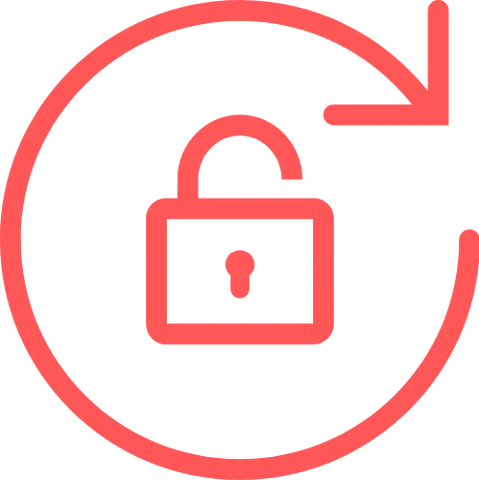by Charleen Montano May 30, 2022
If you’re reading this, then you’ve likely heard that your website is at risk. You’re probably feeling like a deer caught in the headlights with no idea where to begin.
Let me reassure you: there are plenty of steps you can take to keep your company’s site secure. And if lighting up the web doesn’t give that deer-in-the-headlights look, then I don’t know what does!

You might think that your company’s website is just a place for people to go to learn more about your products, services, and values. But it’s actually so much more than that. Your website is a promotional tool and an essential business asset—and it needs to be kept safe and secure at all costs.
Today’s customers expect your online presence to have the same level of security as the bank where they manage their money or the retailer where they shop (or any other major site). In fact, if any aspect of your site’s security is compromised, most customers will just assume you’re not serious about protecting their personal information—and will take their business elsewhere.
That’s why it’s imperative for every website owner to understand and implement good web security practices. Here are some best practices you can use to ensure that your website stays secure:
- Choose a Reputable Host
- Keep Your Software Up to Date
- Back-Up Your Data
- Use Strong Passwords
- Limit Access to Administrator Account
- Protect Against Malware
- Create a Disaster Recovery Plan
- Use HTTPS, SSL, and SFTP Security
- Protect Your Website with a Web Application Firewall (WAF)
- Be Careful What Plugins You Install
- Conclusion
- Let’s Secure Your Web
 Choose a Reputable Host
Choose a Reputable Host
Choosing a reputable host for your website is important for many reasons.
First of all, a reputable host will ensure that your website is secure. They’ll have processes and procedures in place that are designed to protect your content from being accessed by hackers or other malicious individuals.
You also want to choose a host with good customer service. If you have issues with your site, you want someone who can help you solve them quickly without making you feel like they’re wasting your time.
Last but not least, it’s important to choose a host who offers good value for the price they charge. You need to be able to afford to host but still get great performance and reliability out of it.
 Keep Your Software Up to Date
Keep Your Software Up to Date

Updating your software is all about security. Software updates fix security holes, bugs, compatibility issues, performance issues, and installation problems. But mostly the security ones. And the fewer holes you have for hackers to exploit, the better off you are.
The best way to keep your software up to date is to just do it automatically. In most cases, your software will install updates in the background and ask if you would like them when they’re done. If you have any doubts about whether a program needs an update or not, talk to your IT department or visit the developer’s website for more information.
 Back-Up Your Data
Back-Up Your Data

There are a number of ways you can back up your data on your website, but the most important thing you can do is make sure that all of your data is always being backed up. If you don’t have a way to ensure that everything is getting backed up, you risk losing all of your data if something happens to your site or computer.
You also need to make sure that you are keeping track of what is being backed up and when. You should be able to tell what has been backed up recently and when it was backed up. This will help ensure that nothing has been lost in the process and will allow for easy retrieval if needed.
 Use Strong Passwords
Use Strong Passwords

I know, I know. This is the most obvious thing in the world, but it’s also one of the most ignored by people who should know better—including me.
Using a password manager is your best bet for creating and remembering strong passwords for all of your accounts (with no forgetting or re-using!). You might think that writing down all those different passwords would be even more annoying than trying to remember them, but tools like LastPass will actually help you keep track of everything with just one master password. Before long, you’ll have built up an arsenal of super-strong credentials for every account under the sun and never have to worry about losing access again!

Additionally, strong passwords are longer and contain a mix of upper- and lower- case letters, numbers, and special characters.
The best way to create a strong password is to avoid dictionary words or variations of them (e.g., “pizza”), common phrases or sentences (e.g., “this is my first website and I love it”), and personal information (e.g., your pet’s name).
Use complex passwords that are easy for you to remember but difficult for others to guess by using one or more of these techniques:
- Use an associative technique like creating a sentence based on a phrase you often use; e.g., “I hate this stupid site.”
- Use an acronym for something random about yourself; e.g., if I were named Amber Smithson, then AMS21 would be my password because I was born on 2/21/81 at 12:34 pm EST in New York City.
 Limit Access to Administrator Account
Limit Access to Administrator Account

One of the most important things you can do is limit access to administrator accounts to only those who need to know. This will help prevent unauthorized access and keep your data secure should an employee leave or be terminated.
Also, consider implementing a two-step authentication process so that even if someone does get into your network, they won’t be able to do much damage without the second piece of information (typically sent via text message).
And finally: use a password manager! A majority of people still use passwords like 123456 or qwerty123 as their primary login credentials—but these are easy for hackers to guess. Using software that generates strong passwords and stores them in an encrypted database will prevent you from having weak security measures on multiple devices (not just your laptop but also phones and tablets).
 Protect Against Malware
Protect Against Malware
Malware is a broad term that refers to software designed to infiltrate your computer and cause damage. Malware can infect your computer through email attachments, websites, or other sources.
Malware often steals personal information like credit card numbers and passwords, which it uses to gain access to accounts and make fraudulent purchases. It can also cause damage by deleting files from your hard drive.

Malware can infect your system by exploiting security vulnerabilities in operating systems or applications (e.g., Microsoft Word).
Since malware attacks are often the result of phishing scams, it’s important for your employees to be aware of the dangers lurking in their inboxes and social media feeds. If you have an employee that detects a suspicious email or link, they should report it immediately so it can be examined by security professionals.
 Create a Disaster Recovery Plan
Create a Disaster Recovery Plan
You should have a disaster recovery plan in place to minimize the impact of data loss and system downtime. It’s important to have a plan in place so that you can recover quickly after an incident, such as losing your primary server or experiencing an outage due to natural disasters like fire, flood, or earthquake.

If your organization has multiple locations, it is also vital that you have plans in place to recover from any type of disaster at each location (e.g., equipment failure). You can use a cloud-based service such as AWS DR or Azure Backup for these types of situations when traditional backup solutions are not feasible for your business needs (e.g., long time frames for restores).
 Use HTTPS, SSL, and SFTP Security
Use HTTPS, SSL, and SFTP Security

HTTPS, SSL, and SFTP are all methods of encrypting data for secure transmission over the internet. HTTPS is a security protocol used by web servers to create an encrypted connection between your computer and the website you’re visiting. It uses port 443 (or 80 when SSL is not available) on your browser’s default settings. The S stands for “Secure”—you can spot it by looking at the beginning of a website’s URL; if it starts with “https://,” you’ve got yourself some encrypted web browsing!
SSL is a cryptographic protocol used to provide authentication and encryption for websites secured using HTTPS. This means that when you visit Facebook or Google using SSL, everything from your passwords to financial information is kept safe from hackers as it travels across computers’ networks in plain text form before being converted into ciphertext (encrypted text). To enable encryption on these sites, ensure that both of its options are selected under Account Settings > Security.

SFTP stands for “SSH File Transfer Protocol” and allows users to securely transfer files over an encrypted channel using SSH keys instead of passwords, so even if someone stole one key pair from you, they couldn’t decrypt the rest without having access to another pair somewhere else too! If possible, try setting up SFTP rather than FTP because, unlike FTP which sends data unencrypted across networks where anyone could intercept them. At the same time, they sit in transit waiting their turn at being sent through routers/switches, etc.; SFTPS sends everything through one secure tunnel so only people who have access rights will be able to use those credentials.”
 Protect Your Website with a Web Application Firewall (WAF)
Protect Your Website with a Web Application Firewall (WAF)

A WAF is a tool that sits in front of your website and monitors traffic for malicious activity. It’s like having an extra pair of eyes watching everything that happens on your site so you can focus on other things.
The WAF can:
- detect attacks from the outside by analyzing HTTP requests, JavaScript code, and other data packets as they pass through its system. It looks for signs of attack such as known vulnerabilities or suspicious behavior (e.g., multiple login attempts using different usernames). If it detects an attack, it blocks it before it gets to your website, so visitors never even notice anything happened—they stay happy!
- protect against intrusions originating inside the network by scanning internal servers and services for signs of compromise or misuse (e.g., unauthorized file changes) while keeping users unaware they’re being monitored through deep packet inspection technology that doesn’t touch their browsing experience at all except when needed to prevent potential threats from reaching their destination.)
 Be Careful What Plugins You Install
Be Careful What Plugins You Install

You may think that plugins are just a means to an end: they let you add new functionality and make your site better. But can you really trust them?
Yes, plugins can indeed be used for good. They can help improve the functionality of your site by adding things like contact forms, social media widgets, and more.
However, these same plugins can also be used for evil! Hackers have been known to take advantage of vulnerabilities in some plugins and steal data from websites that use them.
Therefore, it’s important to be careful about which third-party plugins you install on your site—you don’t want to get hacked!
In order to protect yourself from harmful hacks like this one (and keep your clients happy), make sure that any plugin you install has:
- Been downloaded from the official repository;
- Has permissions set appropriately;
- Has been updated within the last three months or so;
- Doesn’t contain any ads or popups;
- Hasn’t been installed by someone else already on another website (for example: if someone else installs a plugin called “Robot Arms,” then make sure yours doesn’t contain anything similar).
YOUR COMPANY’S WEBSITE IS AN ESSENTIAL PART OF ITS BUSINESS OPERATIONS, SO IT’S CRUCIAL TO KEEP IT WELL-PROTECTED AGAINST HACKERS AND CYBERATTACKS.
If you’re in charge of managing the company website, then it’s your job to keep it safe.
Your website is an essential part of your business operations. It provides customers with information about what you offer and how they can make purchases or access services. The site also gives them an opportunity to contact you if they have any questions or need help using the products or services that appear on the site.
In addition, many companies use their websites as a platform for marketing campaigns aimed at building brand awareness by promoting special deals, new products, and other newsworthy information — all things that will help grow revenue over time through repeat visitors who return regularly because they want more information from those sources (and hopefully from elsewhere).
Related articles and more: Website Tips & Tricks
For all these reasons alone, it’s crucial for your company to keep its website secure from hackers who might try breaking into its servers through malware attacks or other methods intended for cybercriminals looking for financial gain at another person’s expense—a phenomenon commonly known as “cybercrime.”
Suppose someone successfully gains access to these systems without authorization (as when someone breaks through firewalls). In that case, they could potentially steal sensitive data such as customer credit card numbers and other personal information like names, addresses, etcetera, which would be highly damaging financially (since no one likes paying fines) BUT ALSO, reputationally speaking, since everyone loves keeping their info private!
Conclusion
You now have everything you need to set up a website that is safe and secure for your company. Just remember, the most important thing is to stay on top of it. You need to regularly maintain your website, keep all passwords up-to-date, and be mindful of any updates that might be available.
But don’t let this scare you off from getting started.
These security best practices are more than worth it because they will save you in the end!
So go forth and build an awesome website that provides value while also doing its part to keep us all safe online.
Let’s Secure Your Web
Need a hand in creating the safest place on the internet for your business?– A secure website?
We are here to assist you in putting your web security strategies into action.
Contact us!
Strive Enterprise Official Website
We are the Best Web developers & Online Marketers in Las Vegas, Nevada!
Check out our Portfolio
We Also Offer Digital Marketing For Small & Big Businesses, SEO, E-Commerce, WordPress, PPC Campaign Development & Management for Google, Bing & Yahoo!, Facebook Ads, and more!
We wish you great success!
See you soon!




